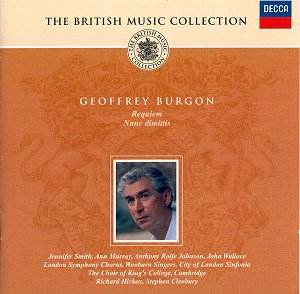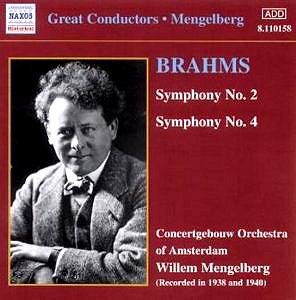 Composer: Geoffrey Burgon
Composer: Geoffrey Burgon
Works: Requiem, Nunc Dimittis
Performers: Jennifer Smith (soprano), Ann Murray (mezzo-soprano), Anthony Rolfe Johnson (tenor), Thomas Hopkinson (treble), John Wallace (trumpet), London Symphony Chorus, Wooburn Singers, Choir of King’s College Cambridge, City of London Sinfonia, Richard Hickox, Stephen Cleobury
Recording: Recorded London 1981 (Requiem), Recorded Cambridge 1996 (Nunc Dimittis)
Label: DECCA
Geoffrey Burgon, born in 1941, occupies a unique niche in contemporary British music, straddling the worlds of serious composition and popular culture. His Requiem, premiered at Hereford Cathedral in 1976, represents the more ambitious side of his oeuvre, while the Nunc Dimittis, beloved from its use in the television adaptation of John le Carré’s Tinker, Tailor, Soldier, Spy, reflects his success in writing for the screen. This recording, part of Decca’s British Music Collection, captures the essence of both works and underscores Burgon’s versatility and emotional depth.
The Requiem is a significant piece, notable for its lush textures and harmonic language that nods to the late twentieth-century choral tradition without succumbing to its more avant-garde tendencies. Burgon’s use of major and minor triads alongside more complex sonorities creates a sense of accessibility that is rare for its time. Richard Hickox leads the City of London Sinfonia and the London Symphony Chorus with an assurance that highlights the work’s dramatic contrasts, from the ethereal opening to the thunderous Dies Irae. The antiphonal exchange between the kettle drums in the latter is particularly thrilling, presenting a stereophonic excitement that amplifies the work’s emotional stakes.
Jennifer Smith, handling the majority of the soprano lines, delivers a performance that is both technically accomplished and deeply expressive. Her ability to navigate the wide leaps required of the part is remarkable, bringing a luminous quality to the work that enhances its spiritual gravity. Ann Murray’s interpretation of what was originally conceived as a male part is a testament to her versatility; she imbues her lines with richness and confidence, while Anthony Rolfe Johnson, who premiered his role, provides authoritative support, ensuring that the choral and solo lines blend seamlessly. The interplay between the soloists and the chorus is particularly noteworthy, with each voice distinct yet harmoniously integrated, creating a tapestry of sound that is both cohesive and powerful.
Transitioning to the Nunc Dimittis, recorded with the Choir of King’s College Cambridge under Stephen Cleobury, the work manifests a haunting beauty. Thomas Hopkinson’s treble voice soars over the sparse orchestration, capturing the ethereal essence of the piece. The atmospheric quality is accentuated by the careful balance achieved in the recording, allowing the listener to appreciate the delicate interplay between the treble and the trumpet, performed with sensitivity by John Wallace. This recording arguably surpasses others that feature a soprano in the treble part, as it preserves the work’s intended vocal timbre while enhancing the emotional resonance of the music.
The sound quality throughout the disc is exceptionally clear, allowing the intricate details of Burgon’s orchestration to emerge with clarity. The engineering captures the dynamic range effectively, from the whispering pianissimos to the climactic outbursts, ensuring that each musical gesture is given its due prominence. This attention to detail is vital in a work like the Requiem, where the contrasting textures play a crucial role in conveying the overarching narrative.
Geoffrey Burgon’s Requiem and Nunc Dimittis serve as compelling representations of his artistic vision, showcasing both his mastery of choral writing and his ability to evoke profound emotional responses. This recording stands out for its interpretative depth and technical excellence, solidifying Burgon’s reputation as a composer capable of bridging the worlds of serious and popular music with grace and sophistication. The performances captured here, particularly under the direction of Hickox and Cleobury, present a definitive account of these significant works, engaging the listener in a rich tapestry of sound that resonates long after the final notes have faded.



